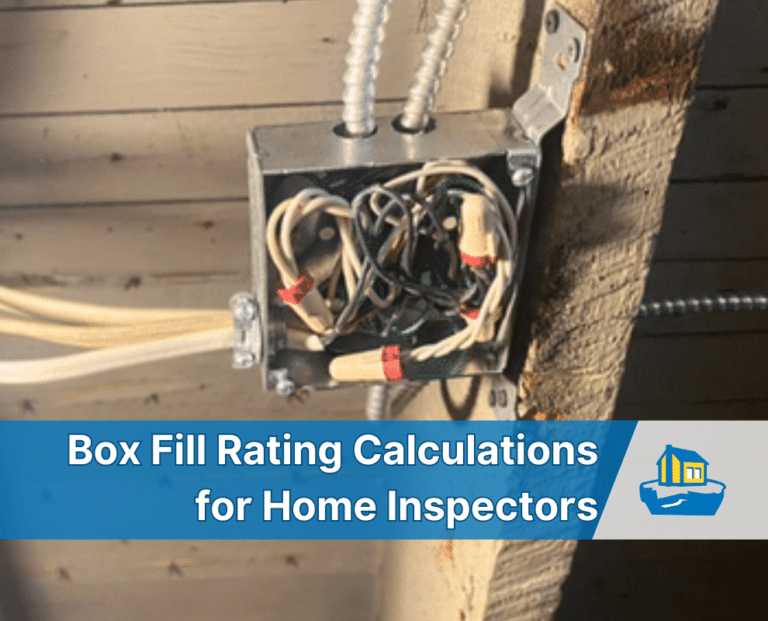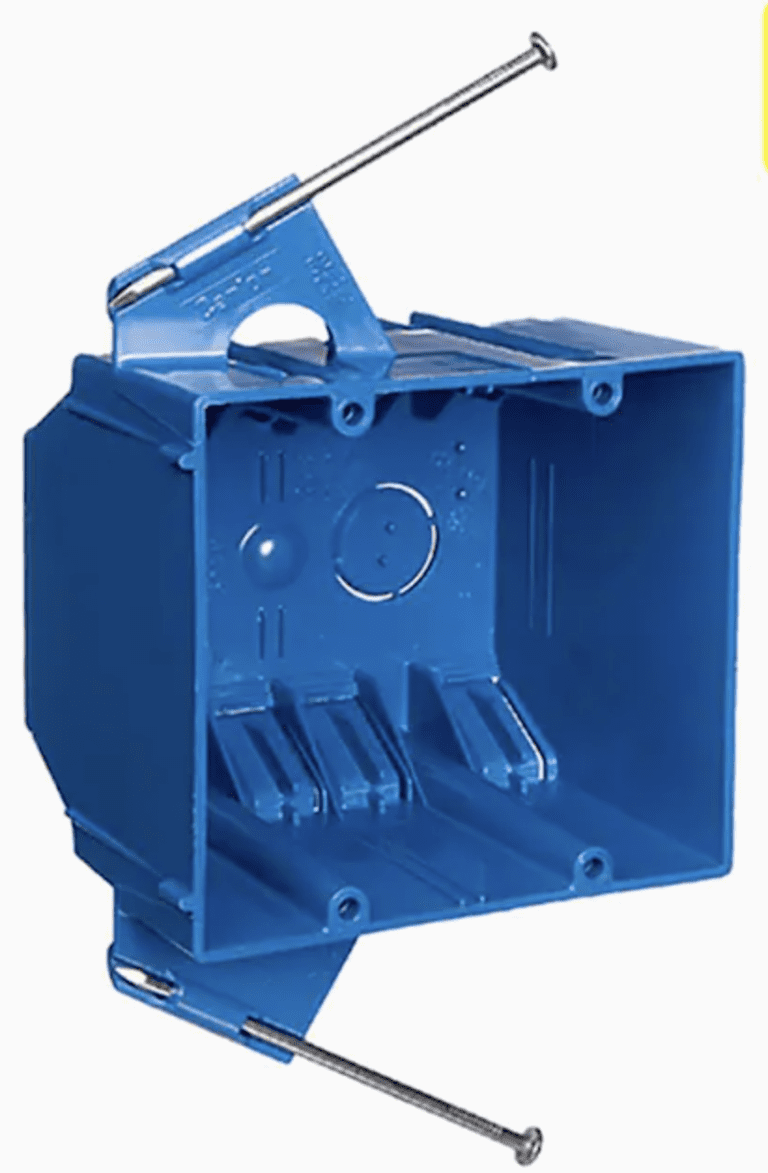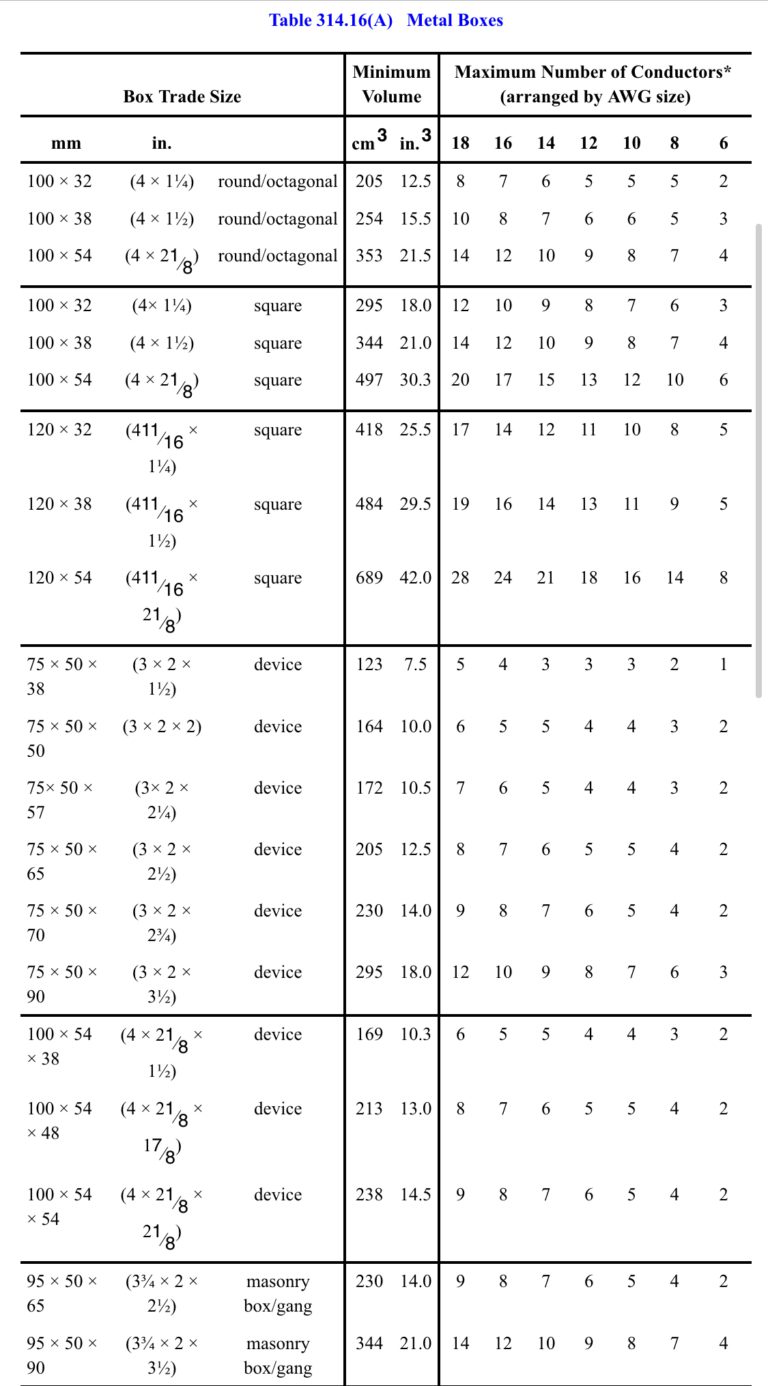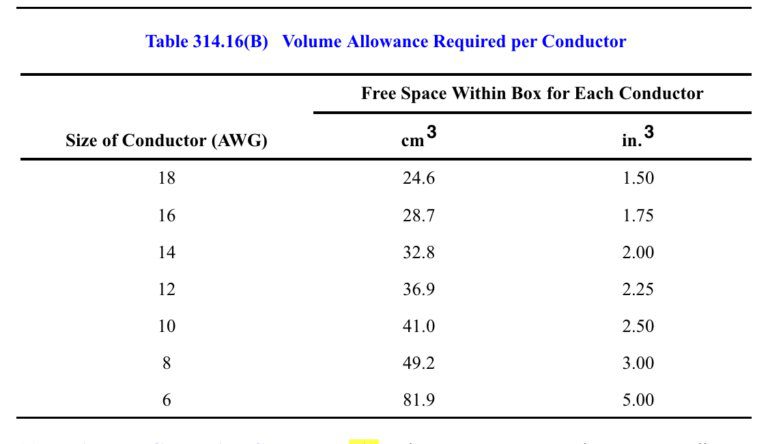4.9 1890+ Google Reviews

Determining if an electrical box has too many conductors by doing box fill calculations is outside the scope of practice for a home inspector. Even opening an outlet box or junction box is not required. But home inspectors should constantly be learning and improving their craft.
To be clear, I don’t think inspectors should open up every box and outlet and perform box-fill calculations. But we all know it is common to see open boxes in the attic, basement, and crawlspace. These open boxes are often installed by amateurs and are more likely to be overfilled.
Overfilled boxes have the same potential danger as most electrical defects – arcing, overheating, and fire.
The box fill code is described in 314.16 of the national electrical code (NEC). It states:
Boxes and conduit bodies shall be of an approved size to provide free space for all enclosed conductors. In no case shall the volume of the box, as calculated in 314.16(A), be less than the fill calculation as calculated in 314.16(B).
In other words, when installing a box, you need to do a fill calculation. Obviously, the box should have enough capacity based on that calculation.
The first step is to find the box fill volume. You will most likely find the blue Carlon PVC boxes for new construction and new installations. These boxes have the volume printed on them. For example, the Carlon 2 gang box in the photo below has 32 cubic inches of capacity printed on the nail flap. You will also need to account for any rings or extenders installed on the box. These also generally have the volume printed on them.

If the box does not have the volume printed on it, you can use the below chart from the NEC to quickly find the box volume. This table can only be used when there are only conductors in the box such as a junction box. When there are other devices in the box, you will need to calculate the volume yourself.

1. Count the Number of Conductors
You need to count the number of conductors (number of wires). Each current-carrying conductor counts as one allowance. For example, four 14-2 cables have eight current-carrying conductors, which would count as eight allowances.
Before 2020, all of the equipment ground conductors in a box counted as a single conductor, so a single allowance. After 2020, up to four ground wires count as a single conductor, and then every ground wire after that counts as 1/4 an allowance. In our four 14-2 cable examples, there will be four ground wires, which count as one conductor and allowance.
You need to know the conductor size or ampacity of the conductor. This is easy with the color coding of cables today. White is 15; yellow is 20, and Orange is 30.
You need to count the number of devices. Each device, such as a switch or outlet, counts as 2 allowances for the size of the larger conductor connected to it. Two outlets would count as 4 allowances.
You need to count the number of clamps. External clamps do not count toward allowances. All of the internal clamps count as one allowance per the largest conductor. There is some debate as to whether the integral clamps of PVC boxes count towards your allowance. Just count them to keep things manageable. That is one more allowance in our scenario. Wire nuts do not add to your allowances.
You’ve been keeping up, right? We have 14 allowances in our example. All we need to do is multiply the number of allowances by the number in the NEC Table below. Size 14 wires get multiplied by 2 for a total of 28. If you remember, this box has a 32 cubic-inch capacity, so we are within the code requirement here.

The Carlon boxes have the maximum fill area in their part numbers. For example, a B232 box is a 2-gang box with 32 cubic inches of capacity. A B112 box is a one-gang box with 12 cubic inches of capacity.
While you are at it, there are some more things you can look for when inspecting electrical boxes.
Box fill calculations are out of the scope of practice for home inspectors and more in line with the work of electrical inspectors. That being said, improperly installed electrical equipment is a hazard for homeowners. This is an easy skill for home inspectors to learn and master, allowing them to provide a better service.
As an Amazon Associate I earn from qualifying purchases. So I provide you with you relevant knowledge and products to make extra money 🙂